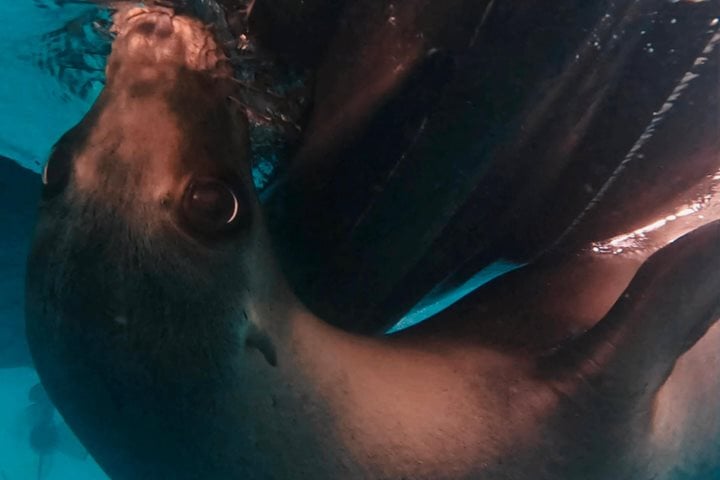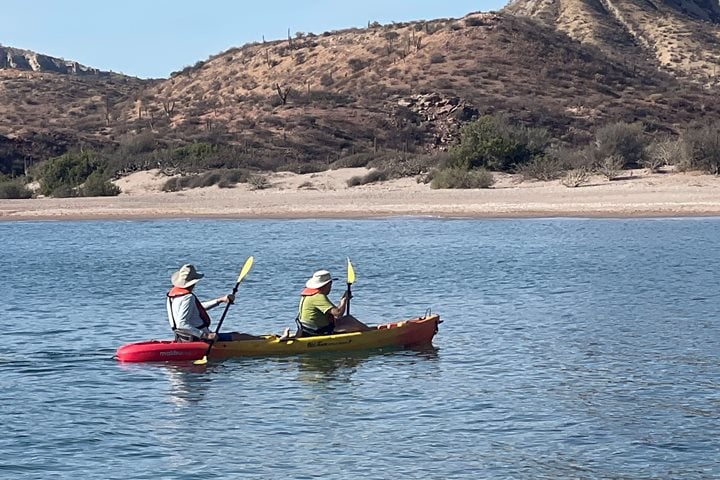The morning sky was as black as our inflatable boats when National Geographic Sea Bird arrived on flat calm seas to Isla San Esteban. We were whisked into shore as dawn began to streak the sky with murky strokes of blue and daubs of light. Our mission was to get to a great spot for sunrise amid cardon cactus. The sliver of a moon faded as the morning brightened, and the pre-dawn and sunrise colors were superb as the clouds enhanced our compositions.
After breakfast we returned to the island for all kinds of walks and meanders through this spectacular arroyo. Giant cardon cactus towered above us, dotted with blossoms. As we explored, we were always on the lookout for the endemic pinto chuckwalla lizard and spiny-tailed iguana. The iguanas were easier to find, though longer hikers were rewarded with views of chuckwallas as well.
We returned to the ship and set off on our way to Isla Rasa. While many were gathered in the lounge learning tips and tricks for smartphone photography, our intrepid eyes on the bow spotted blows ahead, and a few surfacings of a fin whale, the second largest mammal on Earth. We all piled out of the lounge to see, but the whale disappeared. Our time outside quickly evolved into an amazing encounter with bottlenose dolphins languidly swimming, bowriding, and making fantastic leaps on mirror-flat seas. A couple sharks made cameo appearances along the way—a mako and a hammerhead—which made the morning even richer for all.
We lingered as long as we could before returning to our course for Isla Rasa, an island known as the breeding location for 90-95% of the worlds Herrmann’s gulls and elegant terns, as well as the westernmost breeding spot for royal terns. We had no idea what we might find there as the island’s nesting birds have suffered breeding failures in the last few years. We were delighted to discover during our small boat cruises along the coast Isla Rasa good numbers of Herrmann’s gull and elegant terns along the shoreline, all in a flurry interactions and reactions, flying, squabbling, and showing signs of courtship behaviors.
Along the way we spotted some royal terns, elegantly posing Brandt’s cormorants, and we watched an osprey with its chick in a massive nest on a prominent western point. We passed large groups of eared grebes as we zoomed out to neighboring Isla Rasita to enjoy the sea lion haul out. We found many brown pelicans with their rich red breeding color, ravens, many boobies, and a peregrine falcon scouting out its evening meal.
We returned to the ship just in time for our evening meal, continuing on our way in surrealist, flat calm seas as we sailed off for our next adventures.







